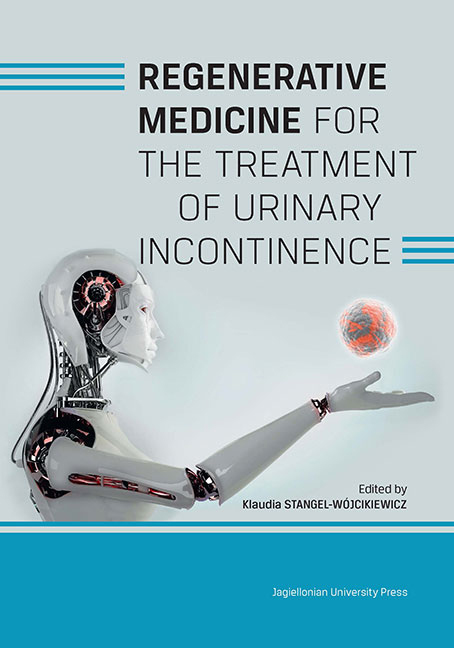Book contents
- Frontmatter
- Contents
- Preface
- Introduction
- Chapter 1 Urinary incontinence in women - outline of the problem
- Chapter 2 Anatomy of the urogenital system
- Chapter 3 Clinical types of urinary incontinence
- Chapter 4 Treatment of stress urinary incontinence
- Chapter 5 Regenerative medicine for the treatment of urinary incontinence
- Chapter 6 Virtual Patient system - simulations of clinical encounters for medical education. Case study of a woman with urinary incontinence
- Chapter 7 Development of a robotic tool aiding a new stem cell-based treatment for stress urinary incontinence in women
- Chapter 8 Difficulties and limitations of cell-based therapy for the treatment of urinary incontinence
- Summary
- List of authors
Introduction
Published online by Cambridge University Press: 03 January 2018
- Frontmatter
- Contents
- Preface
- Introduction
- Chapter 1 Urinary incontinence in women - outline of the problem
- Chapter 2 Anatomy of the urogenital system
- Chapter 3 Clinical types of urinary incontinence
- Chapter 4 Treatment of stress urinary incontinence
- Chapter 5 Regenerative medicine for the treatment of urinary incontinence
- Chapter 6 Virtual Patient system - simulations of clinical encounters for medical education. Case study of a woman with urinary incontinence
- Chapter 7 Development of a robotic tool aiding a new stem cell-based treatment for stress urinary incontinence in women
- Chapter 8 Difficulties and limitations of cell-based therapy for the treatment of urinary incontinence
- Summary
- List of authors
Summary
Recent years have brought remarkable advances in regenerative medicine. Stem cell (SC) and progenitor cell therapy are now used in clinical practice, for example in patients with myocardial infarction, toxic liver and kidney damage and neurodegenerative diseases, but also pelvic floor dysfunction and urinary incontinence (UI) associated with it. The average female life expectancy in West Europe has increased to 75 years, which means medicine has to deal with diagnostic and therapeutic problems associated with urinary continence. Symptoms of UI experienced by professionally active women significantly reduce the quality of their life, and in older age create social discomfort and generate significant expenditures on personal hygiene products (pads, diapers). The most common type of UI in women is stress urinary incontinence, which is caused by anatomical pelvic floor disorders, and also by the dysfunction of the striated urethral sphincter [1]. With age, sphincter cells are affected by apoptosis, and consequently a decrease in urethral closure pressure and urine leakage occur. Treatment based on the administration of stem cell suspension into the urethral sphincter can improve sphincter function and regenerate its structure.
- Type
- Chapter
- Information
- Publisher: Jagiellonian University PressPrint publication year: 2016



